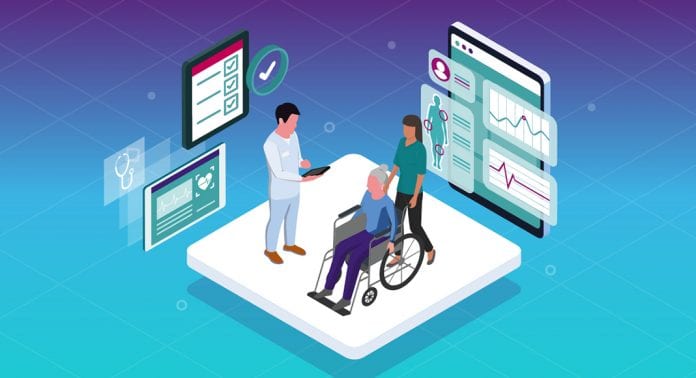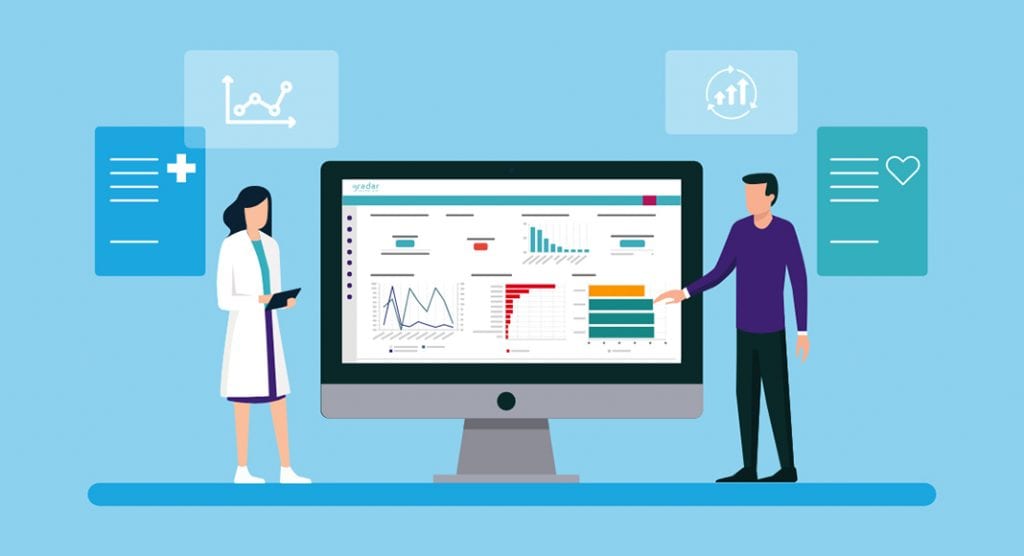
Radar Healthcare explains the role of technology in improving patient care and risk management, and how automation can be used to free up time for staff to focus on other tasks
COVID-19 has led to a long-overdue reappraisal of the role of technology in improving patient care and helping to manage risk. Healthcare professionals need to start asking a crucial question: does our technology need to be managed, or does it do the managing for us? If the former is still the case, it is time to make a change.
Adopting the following three resolutions from Radar Healthcare will help you embrace technology for a smarter 2021:
Adopt automation
Too many tasks are still being carried out manually that could be completed automatically by technology.
At Radar Healthcare, we have spent years listening to our customers about how they work and what they need from technology. What became evident very quickly is that removing human error from the equation and freeing up time for staff to focus on the bigger picture could be transformational for improving patient care. We set about designing and building software that could do just this, driven by a vision of moving away from approaching integral processes such as risk management as a ‘tick-box’ exercise and towards a future where we could manage risk proactively. A strong partnership is formed with technology in cases where it helps organisations to see the probability of risks and prompts staff to take action.
Embrace Artificial Intelligence
Artificial Intelligence (AI) involves using software to organise information, identify trends and spot interesting or important anomalies – all to help clinicians make better decisions.
Rather than being a step in the right direction, AI, coupled with advanced analytics, offers genuine opportunities for us to leap forward – because it delivers capabilities that humans have never had. The speed at which software is able to pull together disparate information and learn from it is astonishing and offers great promise in healthcare.
There are significant benefits for both public and private care providers in adopting risk and compliance software which is powered by analytics and AI capabilities. AI risk software is capable of spotting patterns and predicting the probability of a theoretical risk turning into an active incident. These features are essential if we are to take a proactive approach.
At Radar Healthcare, we build intelligent analytics capabilities into our software. In practice, this means not only providing users with the ability to run reports on what is happening or showing them via a dashboard, but actively processing activities across an organisation in real time, identifying when a risk could emerge before it does. Algorithms are a critical component in any proactive system, because they can be rapidly created and improved to take account of recent and continuously evolving risks.
Complex data patterns in the background of our software can identify events which are logged into our system, and then use these to model what might happen in the future. This enables users to step outside the box and make better decisions by seeing new information and insights.
In some cases, this alerts the user that pre-emptive action needs to be taken, while in other cases it triggers automatic protocols so that established procedures click into place and notifies staff that this has happened eliminating any confusion over what the next step should be. Imagine a care home where half of the staff are not working through a combination of annual leave and sickness. Analytics could identify trends based on historical data and make predictions about the future probability of an incident – for example, when staffing levels fall below 60% there are usually three resident falls, so put X, Y and Z measures in place to prevent these.

Stay human
Healthcare is about humans; and while there is a clear role for technology to play, algorithms and analytics will never replace the level of empathy, kindness and care delivered by human healthcare professionals. The debate should never be about tech versus human, but rather how, when used correctly, technology frees up time for humans to focus on the tasks that truly require a human touch; while also enabling change, improvement and better quality care.
Health professionals need to take a step back and look at what they want to get out of their technology. This usually boils down to two key things: they want it to do time-consuming tasks and they want it to do things they cannot do. There are very clear ways in which technology can do both of these to help clinicians and carers work more efficiently and improve patient safety.
Organisational culture is critical to whether this technology makes an impact or not. Entrepreneurial, imaginative leaders adopt technology earlier, which helps to foster a strong ethos of focusing on patient care.
The road to a healthier 2021
It is fashionable to talk about a ‘new normal’ and declare how COVID-19 will forever change the way we approach public health. The jury is out on how this will go.
However, if 2020 has taught us anything it is that we can use technology to be better prepared for future pandemics, respond strongly and contain outbreaks more effectively – but it requires a change in mindset, towards an innovation-led approach that embraces data sharing. The technology exists to do all of these things, but we need to be brave and embrace the transformative potential of information to save lives.
About Radar
Radar Healthcare is an award-winning software company dedicated to supporting the improvement of safety, performance and quality of care, whilst also helping organisations meet regulatory standards. Working in partnership with healthcare professionals, Radar Healthcare offers solutions across quality, audits, compliance, improving patient care, patient safety, and risk management.
Paul Johnson
Radar Healthcare
info@radarsoftware.co.uk
www.radarhealthcare.co.uk
This article is from issue 16 of Health Europa. Click here to get your free subscription today.
























